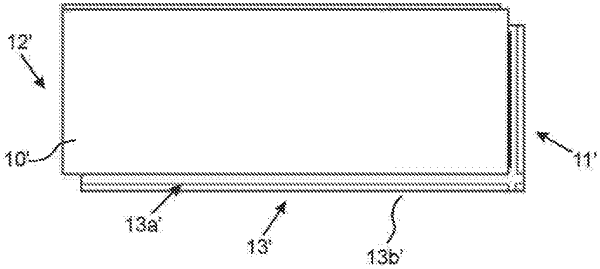| CPC E04F 15/02038 (2013.01) [B27G 13/14 (2013.01); B27M 3/0066 (2013.01); B27M 3/06 (2013.01); E04F 2201/0146 (2013.01); E04F 2201/0153 (2013.01); E04F 2201/0161 (2013.01); E04F 2201/023 (2013.01); E04F 2201/043 (2013.01); E04F 2201/044 (2013.01)] | 28 Claims |

|
1. A set of similar or essentially identical building panels comprising
a first mechanical locking system at respective parallel and opposite third and fourth edges, the first mechanical locking system comprising at the third edge a locking groove configured to receive a first locking tongue of a fourth edge of an adjacent panel by means of a folding displacement of the adjacent panel for, horizontal and vertical locking between two adjacent building panels, and
a second mechanical locking system at respective parallel and opposite first and second edges, configured to cooperate for horizontal and vertical locking of two adjacent building panels,
wherein an upper edge portion of one of the first edge or the second edge comprises a second lower lip portion configured to cooperate with a second upper lip portion of an upper edge portion of an other of the first and second edges of an adjacent panel when said first and second edges are assembled in locking position, and
wherein the second upper lip portion of the second edge is configured to form a tight fit around the second lower lip portion when the first lower lip portion is received under the second upper lip portion in response to the vertical displacement.
|